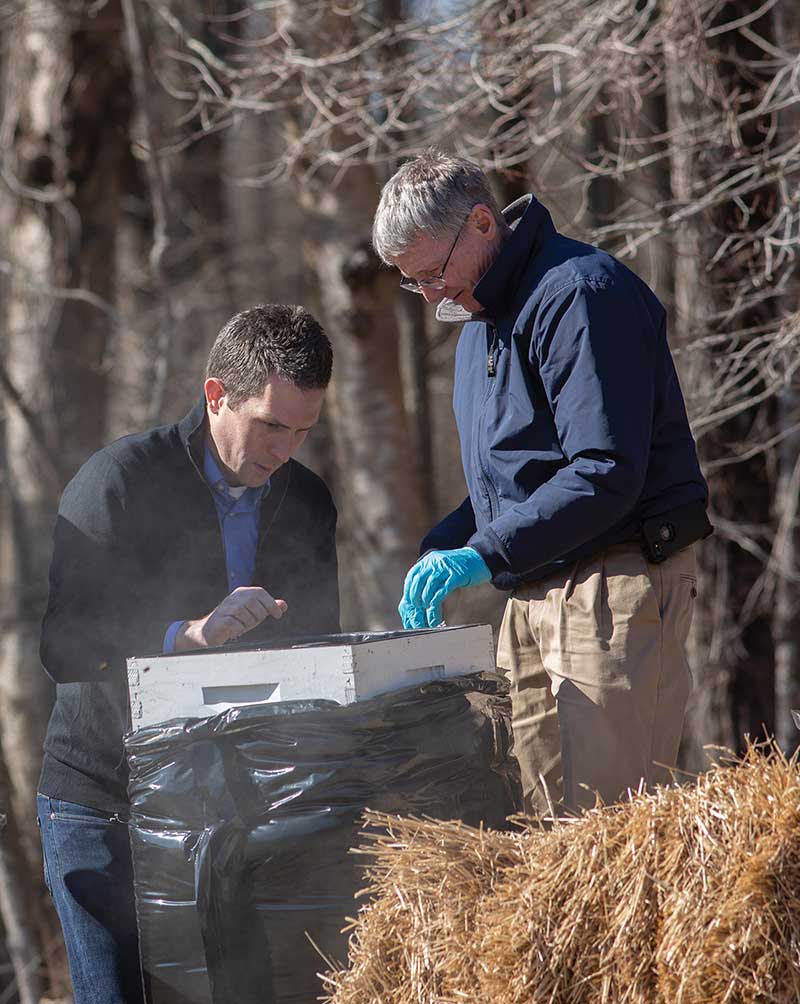
Chemistry Associate Professor Matthew Keiswetter (left) and Entomology Professor Steven Alm (right) inspect a beehive at URI’s East Farm. Photo credit: Beau Jones.
Terrestrial sources of microplastic and the distribution of microplastic on land are far less understood than aquatic environments; however, the estimated distribution of microplastic on land is believed to exceed that distributed in marine surface waters. Researchers have at their disposal a vast army of mobile, automated dust swabs in the form of managed honeybee colonies worldwide. Honeybees have been designed by evolution to collect particulates from the environment. Their feather-like hairs are perfectly suited to collect pollen from flowering plants, and these hairs readily pick up small non-pollen particulates from the environment. These ‘contaminants’ are inadvertently collected by the honeybee and routed back to and through the hive with the pollen. The task of detecting microplastic in the terrestrial environment with the assistance of honeybees becomes the much simpler task of analyzing collected pollen for microplastic. This action at a single beehive coupled to an existing worldwide network of managed colonies becomes a ready-made tool for tracking microplastic emissions.
Additional Information:
Kiesewetter Laboratory
URI Bee Lab

